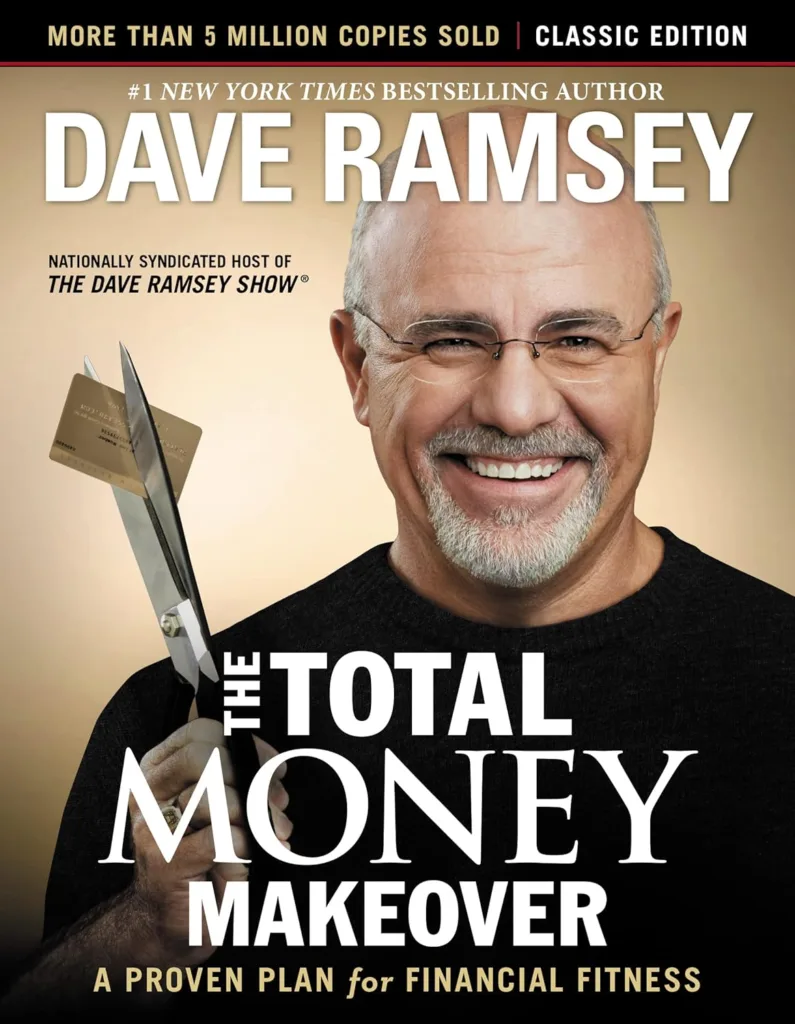Mastering Your Money: A Single Income Household’s Guide to Budgeting
Achieving financial stability in a single-income family, on a single income may seem overwhelming, but with effective budgeting and strategic planning, it is absolutely attainable.
This comprehensive guide empowers you to successfully navigate financial challenges and secure a prosperous future for yourself and your family. Discover practical tips and strategies to manage your finances and create a solid foundation for long-term financial success.
- Related Reading:
- Download our free E-book today and start learning how to create wealth for yourself!
- 11 Best Apps That Pay You Real Money in 2023
- Zombie Nation: How Modern Life Is Turning Us into Mindless Masses
Building a Budget Foundation: Track Your Income and Expenses

- Get 20% Off The Budget Planner with this exclusive link: Amazon.com
This book also includes tips and tricks from experts, as well as inspiring stories from people who have successfully improved their financial situation.
Step 1: Gather Income Information
Begin by creating a comprehensive list of your sources of income. This should include your main source of earnings, any additional gigs or side hustles you may have, as well as any government benefits you receive.
Be sure to include your regular monthly paychecks, any income from freelance work, and any child support payments you may receive, if applicable.
Consider including any potential future income streams such as tax refunds or bonuses. By organizing and documenting your income sources, you can better manage your finances and plan for the future.
Step 2: Analyze Your Expenses
To better manage your finances, it’s important to keep a close eye on your spending. Start by categorizing your expenses into fixed and variable costs.
Fixed expenses, such as rent, mortgage, car payments, utilities, and loan payments, remain constant. On the other hand, variable expenses, like groceries, transportation, and entertainment, tend to fluctuate. By tracking your spending meticulously, you can better control your budget and make informed financial decisions.
Automate expense tracking and budgeting with popular apps like Mint or YNAB (You Need a Budget), or create a simple spreadsheet. Categorize monthly expenses to analyze your spending habits and gain insights into where your money goes.
- Related Reading:
- The Ultimate Guide to Financial Freedom in 2024
- How to Protect Your Money Against Inflation
Step 3: Calculate Your Net Income
Your net income is the amount you have left after subtracting your total expenses from your total income.
To calculate this, first tally up all your monthly income, then total your monthly expenses. The difference between the total income and total expenses gives you your net income.
If the result is positive, it means you have a surplus, which can be used for savings, investments, or reducing debt faster. If it’s negative, it indicates a deficit, which means you’re spending more than you’re earning. This could be a signal to reassess your budget and find areas where you could potentially cut back.
Remember, understanding your net income is key to creating a realistic budget and making wise financial decisions. It provides a clear picture of your financial health and helps direct your spending and saving behavior.
Step 4: Prioritize Your Expenses
When you have a single income, it’s essential to prioritize your expenses. Start by labeling your expenses as ‘needs’, ‘wants’, or ‘savings/debt’.
‘Needs’ are expenses you can’t avoid, like rent or mortgage, utilities, food, and any necessary transportation costs.
‘Wants’ are non-essential items you could live without if necessary, such as dining out, entertainment, or new clothes that aren’t necessities. ‘Savings/debt’ includes any money you put into savings or use to pay off debt.
Once you’ve categorized your expenses, your ‘needs’ should always be the top priority. Make sure your budget allows for these expenses first. After that, allocate funds towards ‘savings/debt’. If there’s money left over, you can allocate some towards your ‘wants’.
Remember, if you’re on a tight budget, you might need to make some sacrifices in the ‘wants’ category. The goal is to live within your means, save for the future, and avoid accumulating debt.
Budgeting Tools and Strategies
In today’s digital age, numerous tools and apps can simplify the budgeting process and make it more manageable.
Services like Mint, YNAB (You Need a Budget), and EveryDollar can help you track your income and spending, set goals and alerts, and visualize your progress. They can sync with your bank accounts, automatically categorize your transactions, and provide real-time updates on your budget.
- Start investing today with Acorns, the easy way to save and invest for your future.
- Sign up today with this exclusive link and get a free $10 investment! Acorns
Employ an Effective Budgeting Strategy

- Get 20% Off The Total Money Makeover with this exclusive link: Amazon.com
Employing effective budgeting strategies can help you save money and stay on track.
The ’50/30/20 rule’ is a popular guideline for allocating your income. This rule suggests that you should spend 50% of your post-tax income on ‘needs’, 30% on ‘wants’, and put 20% towards ‘savings’ or ‘debt repayment’. This approach can be an effective way to manage your finances and ensure you are living within your means.
Another effective strategy is the ‘pay yourself first’ approach. This means that you put a portion of your income into savings as soon as you get paid, before budgeting the rest for expenses. This strategy ensures that you’re consistently saving money, which can help you build an emergency fund, save for retirement, or meet other financial goals.
Remember, no single budgeting strategy works for everyone – it’s important to choose a method that fits your lifestyle, income, and financial goals. Try out different strategies and tools, and tweak them as necessary until you find what works best for you.
Zero-Based Budgeting
Zero-based budgeting is a method that involves planning every dollar you earn. It begins from a ‘zero base’, and every function within an organization or every item in your budget is analyzed for its needs and costs.
The budget is then built around what is needed for the upcoming period, regardless of whether the budget is higher or lower than the previous one.
In the context of personal finance, zero-based budgeting means that if you earn $5000, you’re planning how each of that 5000 dollars will be spent or saved.
You start from zero, and by assigning each dollar a job (whether it’s for rent, groceries, car maintenance, savings, etc.), you end up at zero at the end of the budgeting period.
This method gives you total control over your money, promotes savings, and helps prevent unnecessary spending. It can be time-consuming, but there are budgeting apps like EveryDollar that can help simplify the process.
The goal of zero-based budgeting isn’t to restrict your spending but to empower you to make conscious decisions about your money.
- Related Reading:
- Download our free E-book today and start learning how to create wealth for yourself!
- 11 Best Apps That Pay You Real Money in 2023
- How to Achieve Financial Freedom as an Immigrant Without Papers in 2023
Embrace Automation
Automation can be a crucial tool in managing your finances and sticking to your budget. By setting up automatic payments for recurring expenses like rent, utilities, or subscriptions, you can avoid late fees and better manage your cash flow.
Similarly, automated savings can help you consistently put away money for your financial goals. You can set up automatic transfers to your savings account or retirement fund right after you receive your paycheck.
This ‘set it and forget it’ approach ensures that you’re consistently saving money without having to remember to manually transfer funds each pay period. In essence, automation can help eliminate human error, save time, and make the task of managing your finances more streamlined and efficient.
Implement the Envelope System
The envelope system is a tried and tested budgeting technique that can be particularly useful for those who prefer a tangible method to manage their money. Here’s how to implement it:
- Start by listing your budget categories. These should include all your ‘needs’, ‘wants’, and ‘savings/debt’. For example, you might have envelopes for groceries, rent, utilities, dining out, entertainment, and savings.
- After receiving your income, withdraw cash and distribute it among the envelopes according to your budget allocation. If you’ve allocated $500 for groceries for a month, put $500 in your ‘groceries’ envelope.
- Only spend what’s in each envelope for the corresponding expenses. When the money in an envelope runs out, you stop spending in that category until the next budgeting period.
- At the end of the month, any money left in the envelopes can be added to savings or used to pay down debt.
The envelope system is a powerful tool to curb overspending and encourage mindful spending. However, in today’s digital age, cash isn’t always practical. If you prefer, you can use virtual envelope budgeting apps like Goodbudget which emulate this system.
The ultimate goal is to gain control over your money and spend it within your means. Choose the system that best suits you and adapt it as needed to meet your financial goals.
Review and Adjust
As you continue to use your chosen budgeting system, it’s imperative to periodically review and adjust your budget. This is not a ‘set and forget’ process.
Your income, expenses, and financial goals may change over time, and your budget should reflect those changes. It’s recommended to review your budget every month when you’re starting out.
Look at where you overspent, and where you saved, and adjust your budget accordingly for the next month. Over time, as you get more accustomed to budgeting, you can review every few months.
Remember, the goal isn’t perfection but progress. Even if you overspend one month or can’t save as much as you wanted, don’t give up. Adjust your budget, learn from your mistakes, and keep trying. Budgeting is a journey, not a destination. It’s about gaining control over your money and using it to achieve your financial goals.
Final Thoughts
Budgeting is more than just a financial practice; it’s a gateway to financial freedom.
While there might be bumps in the road as you begin your budgeting journey, the rewards of persevering are immense.
From the peace of mind that comes with financial security to the ability to reach your financial goals and the freedom to make conscious spending decisions, budgeting can truly transform your financial life.
The key to successful budgeting is to choose a method that aligns with your lifestyle, needs, and financial aspirations. Start small, be consistent, learn from any setbacks, and stay the course. Happy budgeting!
Frequently Asked Questions
Q: What if my income fluctuates?
A: While a consistent income makes budgeting easier, managing fluctuations in pay is still possible. Create a budget based on your average income, leaving a buffer for lower months. Consider padding your emergency fund to cover unexpected income gaps.
Q: How do I factor in irregular expenses like car repairs or medical bills?
A: Estimate your annual expenses for irregular items and divide them by 12 to create a “sinking fund” within your budget. This ensures you have funds available when these expenses arise.
Q: I have debt. How do you save money if I prioritize it within my budget?
A: Prioritize high-interest debt first, as it accumulates faster. Consider debt consolidation or avalanche methods to optimize your repayment. Allocate a specific portion of your budget to debt payments and track your progress toward becoming debt-free.
Q: Can I still save for retirement while living on a single income?
A: Absolutely! Start by contributing what you can, even a small amount. Take advantage of employer-sponsored retirement plans and consider increasing your contributions as your income grows. Remember, every dollar saved counts.
Q: I feel overwhelmed by budgeting. What are some helpful resources?
A: Don’t hesitate to seek help! Consider professional guidance from a financial advisor or seek support from online communities and forums dedicated to single-income households. Utilize budgeting apps and online resources to simplify the process.
Q: What are some tips for minimizing spending and saving extra money now?
A: Embrace DIY projects, cook at home more often, and explore free or low-cost entertainment options. Downsize your belongings to reduce storage costs. Utilize coupons, shop around for better deals, and take advantage of free shipping offers.
- Related Reading:
- Download our free E-book today and start learning how to create wealth for yourself!
- 11 Best Apps That Pay You Real Money in 2023
- How to Overcome Financial Procrastination














